
Intro to HydroGeoSphere Training Session - February 2026
This online training session is free to attend!
Note: all event times are in eastern (EST/EDT)
Join Brayden McNeill, Aquanty’s Technical Sales Leader, for a 3-4 hour introductory training session to cover essential HydroGeoSphere topics such as:
The basic HGS workflow (i.e. using grok.exe, phgs.exe, hsplot.exe)
Review of model input/output files
The essential components of a *.grok file, how to structure your model inputs
Using AlgoMesh to generate your model grids/mesh
Visualizing results using TecPlot and/or ParaView
Introduce various resources to help you learn to use HGS
e.g. using the Reference Manual, HGS User Community, and other resources to your advantage.

2026 Power of Water Canada Technical Conference and Trade Show
Join Us at the 2026 Power of Water Canada Technical Conference and Trade Show!
We’re excited to share that Aquanty will be taking part in the 2026 Power of Water Canada (POWC) Technical Conference and Trade Show—the largest gathering of the hydroelectric industry in the country!

Webinar - Tools and Strategies for Agricultural Water Management
Join us for an enlightening webinar as we dive into the tools and strategies for agricultural water management.

Webinar - Introducing hgs2vtu for HGS model post-processing
Join us for an informative webinar introducing hgs2vtu.exe, the powerful new post-processing utility for HydroGeoSphere (HGS) model outputs.

Intro to HydroGeoSphere Training Session - December 2025
This online training session is free to attend!
Note: all event times are in eastern (EST/EDT)
Join Brayden McNeill, Aquanty’s Technical Sales Leader, for a 3-4 hour introductory training session to cover essential HydroGeoSphere topics such as:
The basic HGS workflow (i.e. using grok.exe, phgs.exe, hsplot.exe)
Review of model input/output files
The essential components of a *.grok file, how to structure your model inputs
Using AlgoMesh to generate your model grids/mesh
Visualizing results using TecPlot and/or ParaView
Introduce various resources to help you learn to use HGS
e.g. using the Reference Manual, HGS User Community, and other resources to your advantage.

CWRA Alberta – IAH CNC Conference
Join us at the CWRA-Alberta and IAH-CNC Mixing Zone & Meeting Minds Conference on Nov. 12-14, 2025 - Edmonton, Alberta!
This joint event brings together experts, researchers, and practitioners from groundwater and surface water disciplines to foster collaboration and share cutting-edge insights into integrated water resource management.

Intro to HydroGeoSphere Training Session - November 2025
This online training session is free to attend!
Note: all event times are in eastern (EST/EDT)
Join Brayden McNeill, Aquanty’s Technical Sales Leader, for a 3-4 hour introductory training session to cover essential HydroGeoSphere topics such as:
The basic HGS workflow (i.e. using grok.exe, phgs.exe, hsplot.exe)
Review of model input/output files
The essential components of a *.grok file, how to structure your model inputs
Using AlgoMesh to generate your model grids/mesh
Visualizing results using TecPlot and/or ParaView
Introduce various resources to help you learn to use HGS
e.g. using the Reference Manual, HGS User Community, and other resources to your advantage.

Webinar - Assessing the Sensitivity of Subsurface Mine-Dewatering Simulations to Surface Water Representation
Join us for an insightful session exploring how climate change may influence mine dewatering strategies, featuring cutting-edge integrated hydrologic modelling approaches.

Intro to HydroGeoSphere Training Session - August 2025
This online training session is free to attend!
Note: all event times are in eastern (EST/EDT)
Join Brayden McNeill, Aquanty’s Technical Sales Leader, for a 3-4 hour introductory training session to cover essential HydroGeoSphere topics such as:
The basic HGS workflow (i.e. using grok.exe, phgs.exe, hsplot.exe)
Review of model input/output files
The essential components of a *.grok file, how to structure your model inputs
Using AlgoMesh to generate your model grids/mesh
Visualizing results using TecPlot and/or ParaView
Introduce various resources to help you learn to use HGS
e.g. using the Reference Manual, HGS User Community, and other resources to your advantage.

Intro to HydroGeoSphere Training Session - July 2025
This online training session is free to attend!
Note: all event times are in eastern (EST/EDT)
Join Brayden McNeill, Aquanty’s Technical Sales Leader, for a 3-4 hour introductory training session to cover essential HydroGeoSphere topics such as:
The basic HGS workflow (i.e. using grok.exe, phgs.exe, hsplot.exe)
Review of model input/output files
The essential components of a *.grok file, how to structure your model inputs
Using AlgoMesh to generate your model grids/mesh
Visualizing results using TecPlot and/or ParaView
Introduce various resources to help you learn to use HGS
e.g. using the Reference Manual, HGS User Community, and other resources to your advantage.

Intro to HydroGeoSphere Training Session - June 2025
This online training session is free to attend!
Note: all event times are in eastern (EST/EDT)
Join Brayden McNeill, Aquanty’s Technical Sales Leader, for a 3-4 hour introductory training session to cover essential HydroGeoSphere topics such as:
The basic HGS workflow (i.e. using grok.exe, phgs.exe, hsplot.exe)
Review of model input/output files
The essential components of a *.grok file, how to structure your model inputs
Using AlgoMesh to generate your model grids/mesh
Visualizing results using TecPlot and/or ParaView
Introduce various resources to help you learn to use HGS
e.g. using the Reference Manual, HGS User Community, and other resources to your advantage.

CWRA 2025 National Conference
Join Us at the CWRA 2025 National Conference in Penticton, BC!
Mark your calendars for the CWRA 2025 National Conference, taking place May 25-29, 2025, in Penticton, BC—on the traditional territories of the Okanagan (Syilx) People in the Okanagan Watershed.
With the theme “Living Between Waters – Connecting Water & Resilience,” this year’s conference will focus on collaboration, Indigenous rights, and the role of municipalities, governments, and industry in advancing water resilience.
The event will feature technical sessions, workshops, and panel discussions highlighting practical solutions for shared water management across jurisdictions and watersheds. Attendees will explore strategies for building partnerships, Indigenous-led stewardship, and ensuring a sustainable water future.
DATE: May 25 - 29, 2025
LOCATION: Penticton, BC
Visit the conference website by clicking the links below, and discover the full speaker list, and registration details.
FOR MORE INFORMATION:
Click here to learn more about the event and stay updated on program details.

Working at Aquanty – Coop Placement Information Session
As Aquanty continues to grow we are keen to bring on bright young minds who are interested in fully integrated hydrologic modelling, and to help them transition into a successful career in water resources modelling/engineering. This information session will help prospective co-op students to learn more about working at Aquanty and what kinds of projects you can expect to work on.
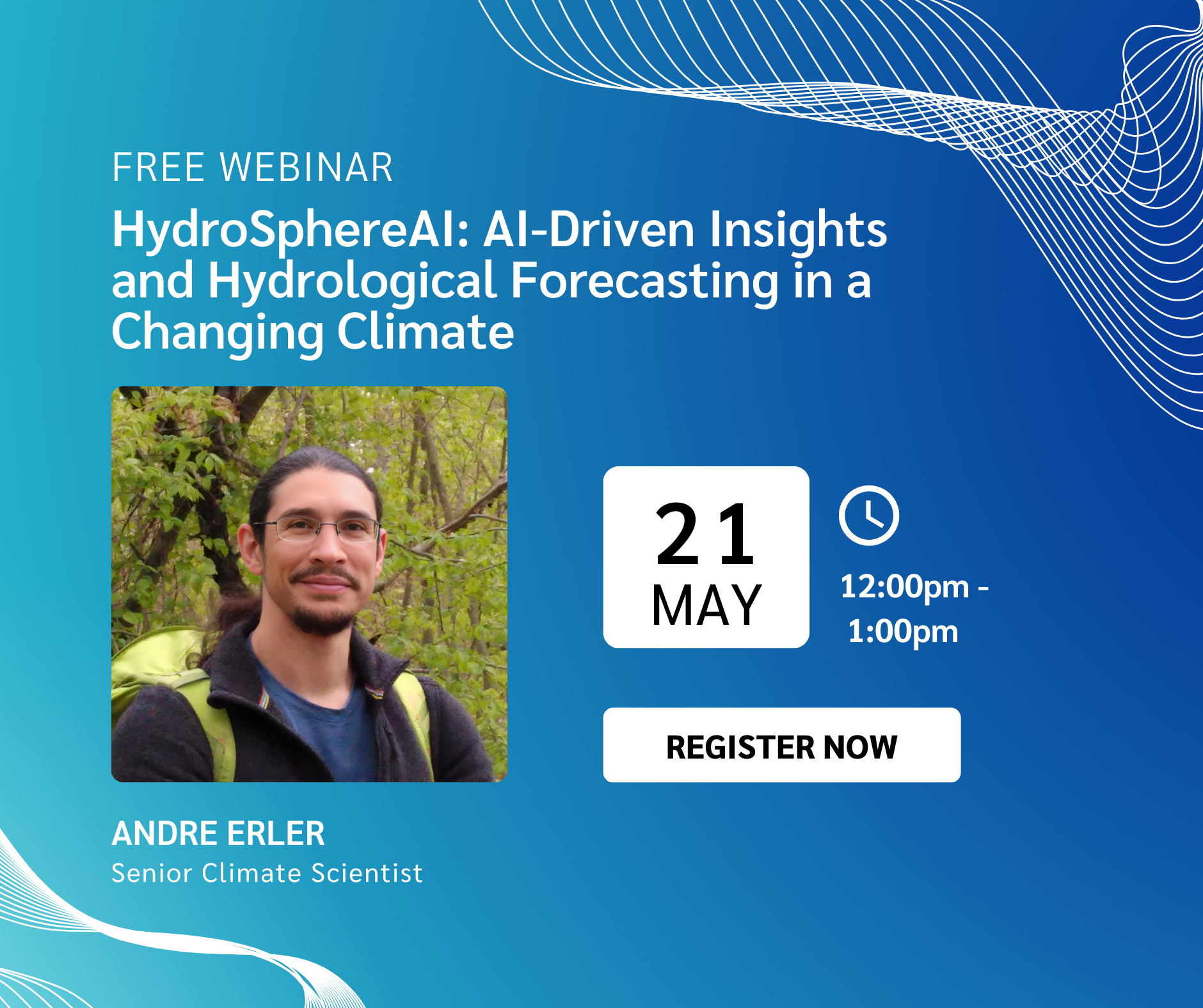
Webinar - HydroSphereAI: Machine Learning-Driven Insights and Hydrological Forecasting in a Changing Climate
Join us for an insightful webinar on HydroSphereAI, where we explore a cutting-edge Machine Learning (ML)-driven approach to hydrological forecasting. Learn how our models improve streamflow predictions, even in ungauged basins, and how real-time data integration enhances forecasting accuracy. We’ll also demonstrate the HydroSphereAI platform and its practical applications for water resource management.

HydroGeoSphere Short Course: Introduction to Fully-Integrated Hydrologic Modelling
SCW-B3 - HydroGeoSphere Short Course: Introduction to Fully-Integrated Hydrologic Modelling
Organizer: Brayden McNeill
Contact: bmcneill@aquanty.com
Join the Aquanty team for a two-day intensive course which explores the complete integrated hydrologic modelling process using HydroGeoSphere (HGS). This course consists of various lectures and exercises to explore topics such as: (i) the benefits of integrated hydrologic modelling; (ii) the governing equations that control flow in an HGS model; (iii) use of supporting software for model mesh generation and results visualization; (iv) model parameterization and conceptualization of boundary conditions; (v) numerical solution techniques and recommended settings optimal convergence and improved runtimes; and (vi) model convergence troubleshooting, model calibration and more. Participants will receive a temporary license of HydroGeoSphere (30-day), a temporary license of AlgoMesh (2-week), a copy of all course content including lectures (PDF) and exercises, and the opportunity to network with other HydroGeoSphere users and the software development team.
DATE: May 15-16 2025
LOCATION: Hybrid, virtual and in-person event. In-person location: University of Ottawa, 75 Laurier Avenue East, Ottawa, ON, Canada, K1N 6N6
The conference provides an opportunity for watershed district staff and board members to engage with industry professionals, decision makers, businesses, and each other. It provides a place for celebrating successes, community building, staying connected to new and emerging practices, education, and advocacy for the protection of our water resources.
Visit the conference website by clicking the links below, and discover the full speaker list, and registration details.
FOR MORE INFORMATION:
Visit GAC-MAC-IAH-CNC 2025 to learn more about the event and stay updated on program details.

GAC-MAC-IAH-CNC 2025 Conference
Discover Groundbreaking Research at GAC-MAC-IAH-CNC 2025 in Ottawa!
Join us at GAC-MAC-IAH-CNC 2025, hosted at the University of Ottawa, Ontario, from May 11-14, 2025. This premier event will feature a dynamic scientific program including field trips, workshops, short courses, and technical sessions, providing valuable insights into geology, mineralogy, and hydrology.
The Water section will include a number of exciting sessions, with Steve Berg and Steve Frey from Aquanty co-chairing select sessions. Aquanty will also deliver a short course, offering practical expertise and insights into advanced water resource modeling.
ABSTRACTS
Special Session 7
Title: Surface water-groundwater interactions through recharge, discharge, and contribution to ecosystems
Chairs: Emmanuel Dubois; Marie Larocque; Eric Rosa; Steven Berg; Steven Frey
From the infiltration of water at the soil surface to groundwater discharge zones, groundwater resources sustain various anthropic uses and groundwaterdependent ecosystems. Understanding the complexities of surface water and groundwater interactions, especially through groundwater recharge and discharge is crucial for linking groundwater dynamics to these uses. However, global change – through climate shifts, altered precipitation patterns, warming temperatures, and increased land-use pressures – threatens the current balance and impacts human uses and groundwater-dependent ecosystems. Alternatively, Nature-based solutions are increasingly implemented to mitigate the impacts of global change on water resources by leveraging specific ecosystem services. Consequently, a better understanding of the processes involved in the surface water-ecosystem-groundwater feedback loops is urgently needed. This session explores methodological developments and the characterization of processes linked to groundwater recharge, groundwater flow and groundwater discharge, as well as interactions with ecosystems. This session seeks contributions presenting advancements in monitoring, field-based investigations, data-driven analysis, and simulation methods from simple conceptual models to fully integrated numerical models that enhance our ability to track these processes and predict groundwater availability, surface water-groundwater interactions, and ecosystem responses under changing conditions. Contributions on the design, implementation, and performance assessment of Nature-based solutions are also of interest, as they appear to be valuable solutions to mitigate changes in the connections between groundwater and surface water reservoirs and to increase the resilience of groundwater-dependent ecosystems.
Special Session 14
Title: Public groundwater science and policy in Canada: Challenges of jurisdiction, funding and science capacity.
Chairs: Hazen Russell; Christine Rivard; Marie Larocque; Boyan Brodaric; Eric Boisvert
Although groundwater is the source of supply for around 30% of Canadians, and often feeds watercourses, surface water has historically been the focus of most research and studies. Following the creation of Environment Canada (EC) in 1971, freshwater science was seemingly concentrated within the newly funded agency. Environment Canada became responsible for all aspects of groundwater quality, which is intimately linked to water supply. Nevertheless, water has continued to be of concern within 22 federal departments, reflecting its universal importance to Canadian society. Governance of water is vested principally with provinces with the federal government having responsibility in certain circumstances and settings. In response to concerns documented in the 1993 Canadian Geoscience Report, the GSC renewed activity with groundwater aquifer mapping studies and undertook the first regional hydrogeological characterization project in Canada. Since then, the GSC and other branches of NRCan, along with provincial and academic collaborators have been involved in local watershed to regional scale and national groundwater studies. Notable federal influences during this 30-year period on the role and scope of studies was the Framework for Collaboration on Groundwater (2003) and the Senate report Water in the West Under Pressure (2005). Provincially, important programs such as Source Protection in Ontario, PACES (Projets d’acquisition de connaissances sur les eaux souterraines) in Quebec, and Waters for Life in Alberta have invigorated and revolutionised groundwater studies in their respective provinces. This session affords an occasion to review 30 plus years of activity, successes and failures, and consider future roles and opportunities. It also is an opportunity to review and question the necessary roles of provincial and federal government, academic, and NGOs in advancing groundwater knowledge, and data management and dissemination for sustainable water resource management. The session is topical as many of the current concerns and issues around the Canada Water Agency and groundwater resources in Canada and worldwide have emerged cyclically over the past 40 years and are more present today than ever before. The session will include invited keynote presentations from recognized experts
Special Session 16
Title: Harnessing large scale hydrologic models to assess future water security
Chairs: Melissa Bunn; Brian Smerdon; Steven Frey
Earth’s changing climate is nudging the hydrologic cycle in ways that society has not planned for. Predicting how rivers, lakes and groundwater are responding to climate change is necessary for sustainably managing water needs for food production, energy generation, and mineral resource extraction while also maintaining ecosystem function. To meaningfully represent the spatial and temporal variation in climate, hydrologic models typically encompass large watersheds and major drainage basins. At these scales, processes like the intrinsic link between groundwater and surface water is challenging to represent and often poorly resolved. This session will explore the development and application of large hydrologic models for climate change assessment, with a focus on regional scale integration of groundwater and surface water. Through the session, we seek perspectives on: (1) how groundwater is represented in regional scale hydrologic and water resource assessments, (2) the importance of groundwater for large scale water management in different physiographic settings, and (3) ongoing efforts to address conceptual model gaps in the application of regional scale models towards water management and security objectives.
Short Course
SCW-B3 - HydroGeoSphere Short Course: Introduction to Fully-Integrated Hydrologic Modelling
Organizer: Brayden McNeill
Contact: bmcneill@aquanty.com
Join the Aquanty team for a two-day intensive course which explores the complete integrated hydrologic modelling process using HydroGeoSphere (HGS). This course consists of various lectures and exercises to explore topics such as: (i) the benefits of integrated hydrologic modelling; (ii) the governing equations that control flow in an HGS model; (iii) use of supporting software for model mesh generation and results visualization; (iv) model parameterization and conceptualization of boundary conditions; (v) numerical solution techniques and recommended settings optimal convergence and improved runtimes; and (vi) model convergence troubleshooting, model calibration and more. Participants will receive a temporary license of HydroGeoSphere (30-day), a temporary license of AlgoMesh (2-week), a copy of all course content including lectures (PDF) and exercises, and the opportunity to network with other HydroGeoSphere users and the software development team.
DATE: May 11-14 2025
LOCATION: University of Ottawa, 75 Laurier Avenue East, Ottawa, ON, Canada, K1N 6N6
The conference provides an opportunity for watershed district staff and board members to engage with industry professionals, decision makers, businesses, and each other. It provides a place for celebrating successes, community building, staying connected to new and emerging practices, education, and advocacy for the protection of our water resources.
Visit the conference website by clicking the links below, and discover the full speaker list, and registration details.
FOR MORE INFORMATION:
Visit GAC-MAC-IAH-CNC 2025 to learn more about the event and stay updated on program details.

Intro to HydroGeoSphere Training Session - May 2025
This online training session is free to attend!
Note: all event times are in eastern (EST/EDT)
Join Brayden McNeill, Aquanty’s Technical Sales Leader, for a 3-4 hour introductory training session to cover essential HydroGeoSphere topics such as:
The basic HGS workflow (i.e. using grok.exe, phgs.exe, hsplot.exe)
Review of model input/output files
The essential components of a *.grok file, how to structure your model inputs
Using AlgoMesh to generate your model grids/mesh
Visualizing results using TecPlot and/or ParaView
Introduce various resources to help you learn to use HGS
e.g. using the Reference Manual, HGS User Community, and other resources to your advantage.
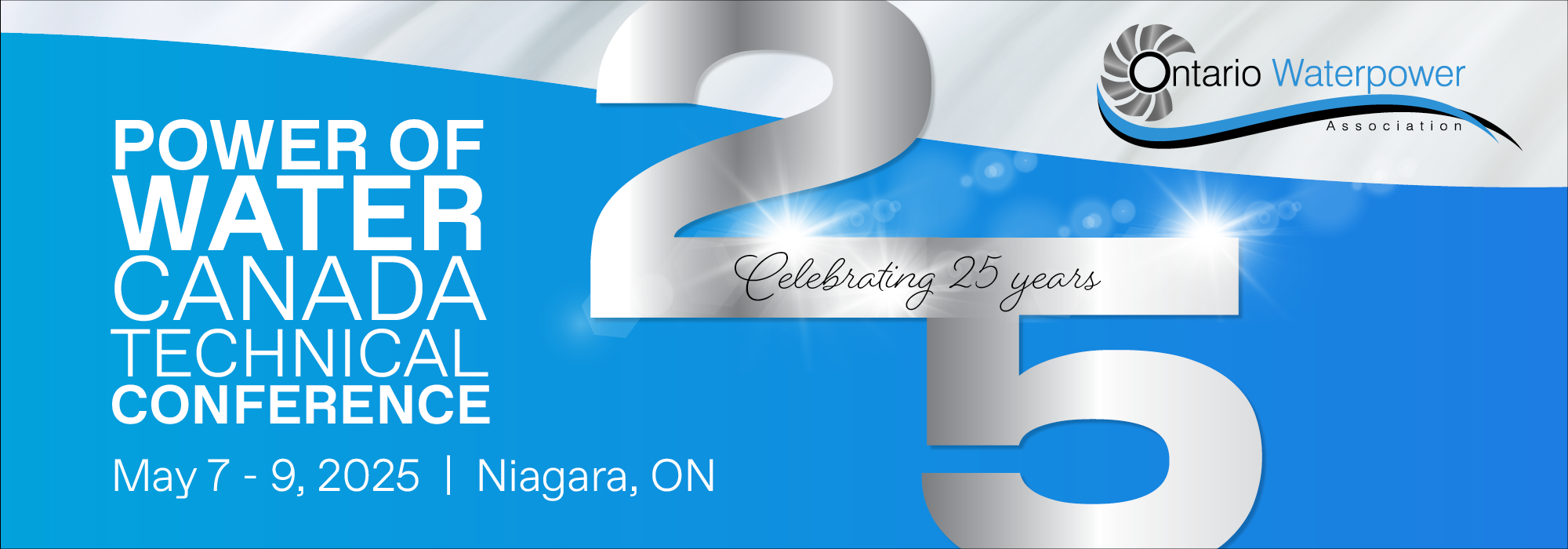
2025 Power of Water Canada Conference
Explore the Future of Waterpower at the 2025 Power of Water Canada Conference!
Join us as we celebrate the 25th anniversary of the Power of Water Canada Conference, the premier event dedicated to advancing sustainable waterpower development. Taking place on May 7 - 9th 2025, this milestone gathering will bring together industry leaders, researchers, and professionals from Canada, the U.S., and beyond to explore the latest innovations in water management and hydropower.
Aquanty is attending for the first time ever, and we’re quite excited to debut our new machine learning based hydrologic forecasting product (HydroSphereAI) for the hydro-electric community in Ontario.
This year’s conference will feature keynote speakers, panel discussions, and interactive workshops, highlighting cutting-edge solutions shaping the future of the water sector. Be part of this landmark event and connect with experts driving sustainable change in waterpower.
Don’t miss this opportunity to engage with the industry’s best and celebrate 25 years of innovation in waterpower!
DATE: May 7 - 9, 2025
LOCATION: Niagara Falls, Ontario
Visit the conference website by clicking the links below, and discover the full speaker list, and registration details.
FOR MORE INFORMATION:
Visit 2025 Power of Water Canada Conference to learn more about the event and stay updated on program details.

Conservation Authority Collaborative Information Sessions (CACIS) 2025
Discover Groundbreaking Research at CACIS 2025 in Burlington!
Steve Frey will be at Conservation Authority Collaborative Information Sessions (CACIS) 2025, from April 30 - May 1, 2025. This premier event brings together professionals in GIS, IT, and Information Management from various conservation authorities, alongside representatives from federal and provincial ministries, academic institutions, and private sector partners.
This year at CACIS, Steve Frey from Aquanty will be giving a presentation:
Title: The HydroClimateSight hydro-climatological prediction and analysis system for Ontario
ABSTRACT
HydroClimateSight is Aquanty's cutting-edge cloud-based computing system transforming hydrological forecasting. By integrating near-real-time field observations, remote sensing products, and meteorological predictions, this platform provides unparalleled accuracy and reliability in hydrological forecasts using both numerical physics-based and AI-based models. The challenges of operational implementation of a real-time forecasting service will be discussed, including real-time processing of numerical weather forecasts, availability of input data, and aspects of stakeholder engagement and gaining trust with the end-user. The audience will learn the steps involved to set up a real-time forecasting model for their region and integrate the predictions within their existing computer systems. We will also review the recent beta test of HydroSphereAI (our machine-learning based forecasting system) for Conservation Authorities across Ontario.
PRESENTATION TIME: Wed April 30th at 11:30am
DATE: April 30 - May 1, 2025
LOCATION: Holiday Inn, 3063 South Service Road, Burlington, ON, L7N 3E9, Canada
The conference is a cornerstone event for conservation authorities since their launch in May 2007. This annual conference brings together professionals in GIS, IT, and Information Management from various conservation authorities, alongside representatives from federal and provincial ministries, academic institutions, and private sector partners. Over the course of two days, attendees have the opportunity to showcase their critical work, exchange ideas, and strengthen collaborations across organizations.
Visit the conference website by clicking the links below, and discover the full speaker list, and registration details.
FOR MORE INFORMATION:
Visit Conservation Authority Collaborative Information Sessions (CACIS) 2025 to learn more about the event and stay updated on program details.

Intro to HydroGeoSphere Training Session - April 2025
This online training session is free to attend!
Note: all event times are in eastern (EST/EDT)
Join Brayden McNeill, Aquanty’s Technical Sales Leader, for a 3-4 hour introductory training session to cover essential HydroGeoSphere topics such as:
The basic HGS workflow (i.e. using grok.exe, phgs.exe, hsplot.exe)
Review of model input/output files
The essential components of a *.grok file, how to structure your model inputs
Using AlgoMesh to generate your model grids/mesh
Visualizing results using TecPlot and/or ParaView
Introduce various resources to help you learn to use HGS
e.g. using the Reference Manual, HGS User Community, and other resources to your advantage.

Intro to HydroGeoSphere Training Session - March 2025
This online training session is free to attend!
Note: all event times are in eastern (EST/EDT)
Join Brayden McNeill, Aquanty’s Technical Sales Leader, for a 3-4 hour introductory training session to cover essential HydroGeoSphere topics such as:
The basic HGS workflow (i.e. using grok.exe, phgs.exe, hsplot.exe)
Review of model input/output files
The essential components of a *.grok file, how to structure your model inputs
Using AlgoMesh to generate your model grids/mesh
Visualizing results using TecPlot and/or ParaView
Introduce various resources to help you learn to use HGS
e.g. using the Reference Manual, HGS User Community, and other resources to your advantage.

CANCID Webinar: Tile Drainage, and Tile Drainage Management Influences on Groundwater and Surface Water
Tile drainage management is considered a beneficial management practice (BMP) for reducing nutrient loads in surface water. Research has shown that controlling tile discharge via control structures with adjustable stop gates can be very effective for reducing tile discharge volume, and that on an annualized basis there is often a reduction in nutrient losses that is proportional to the reduction in discharge. However, the influence of controlled drainage on groundwater resources is rarely considered. In this presentation we will discuss tile drainage experiments that were conducted in Ontario, Canada, that were designed to assess the influence of drainage management on the movement of nutrients and chemical tracers to surface water and groundwater under controlled (CD) and free drainage (FD) tile management. We will also present results from 2-dimensional dual-permeability modeling that was conducted to help develop a better understanding of the flow and transport processes within the soil profile and shallow groundwater system under different drainage management scenarios. Results from the modeling demonstrate that dominant flow and transport characteristics at the field site were successfully replicated, including higher, more continuous tile discharge and lower peak tracer concentrations in FD tile effluent; as compared to CD, where discharge was intermittent but peak concentrations were higher. Explicit representation of preferential flow in the modeling work was essential, as macropores were shown to transmit > 98 % of surface infiltration, tile flow, and tile nutrient loads for both FD and CD. Results show that while CD can reduce tile discharge and soluble nutrient loads and concentrations in tile effluent and hence surface water receptors, it can also promote NO3 loading into groundwater.

Intro to HydroGeoSphere Training Session - February 2025
This online training session is free to attend!
Note: all event times are in eastern (EST/EDT)
Join Brayden McNeill, Aquanty’s Technical Sales Leader, for a 3-4 hour introductory training session to cover essential HydroGeoSphere topics such as:
The basic HGS workflow (i.e. using grok.exe, phgs.exe, hsplot.exe)
Review of model input/output files
The essential components of a *.grok file, how to structure your model inputs
Using AlgoMesh to generate your model grids/mesh
Visualizing results using TecPlot and/or ParaView
Introduce various resources to help you learn to use HGS
e.g. using the Reference Manual, HGS User Community, and other resources to your advantage.
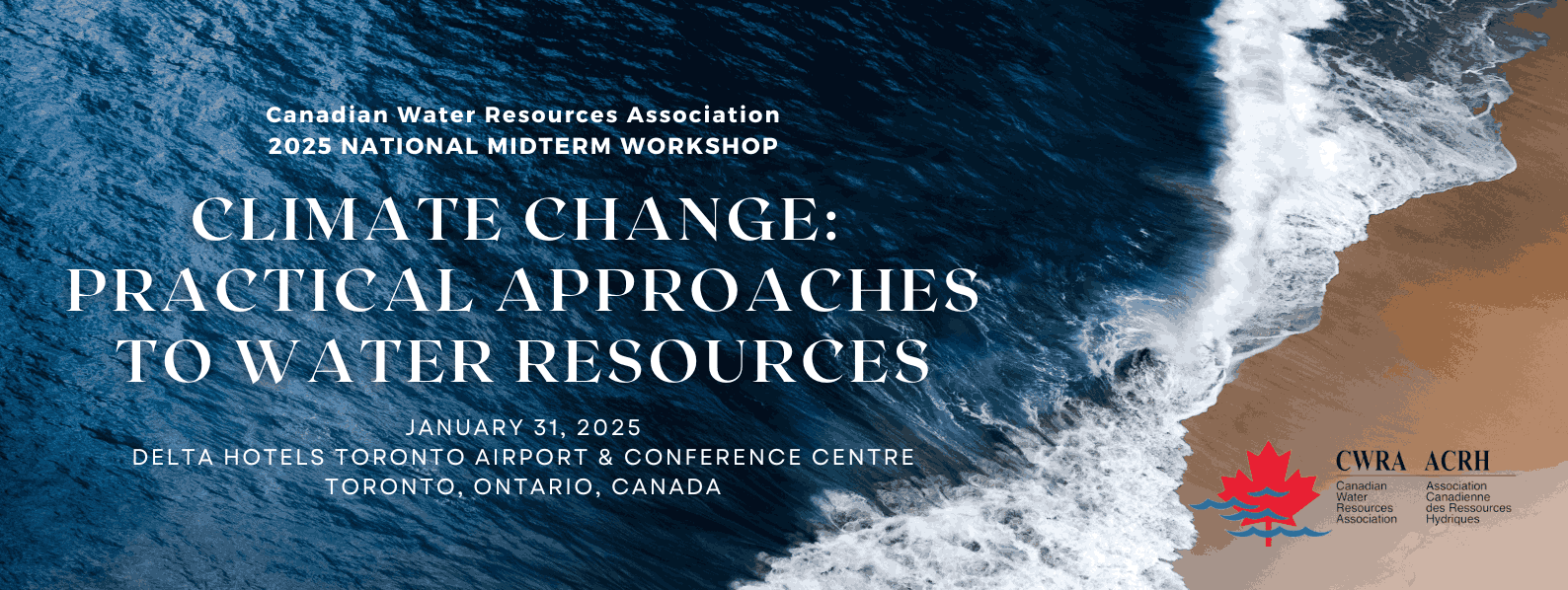
CWRA WORKSHOP ON CLIMATE CHANGE: PRACTICAL APPROACHES TO WATER RESOURCES
The CWRA Ontario Conference, themed Climate Change: Practical Approaches to Water Resources, will bring together professionals to explore innovative solutions and strategies for addressing the impacts of climate change on water resources.
DATE: Friday, January 31, 2025, 8:00 AM – 4:30 PM ET
LOCATION: Delta Hotels Toronto Airport & Conference Centre, Toronto, Ontario, Canada
Hosted by the CWRA Ontario Board, this event offers a dynamic program featuring presentations on cutting-edge research, case studies, and technical solutions to tackle climate extremes, enhance natural asset management, and develop adaptation and mitigation strategies.
Visit the conference website by clicking the links below, and discover the full speaker list, and registration details.
FOR MORE INFORMATION:
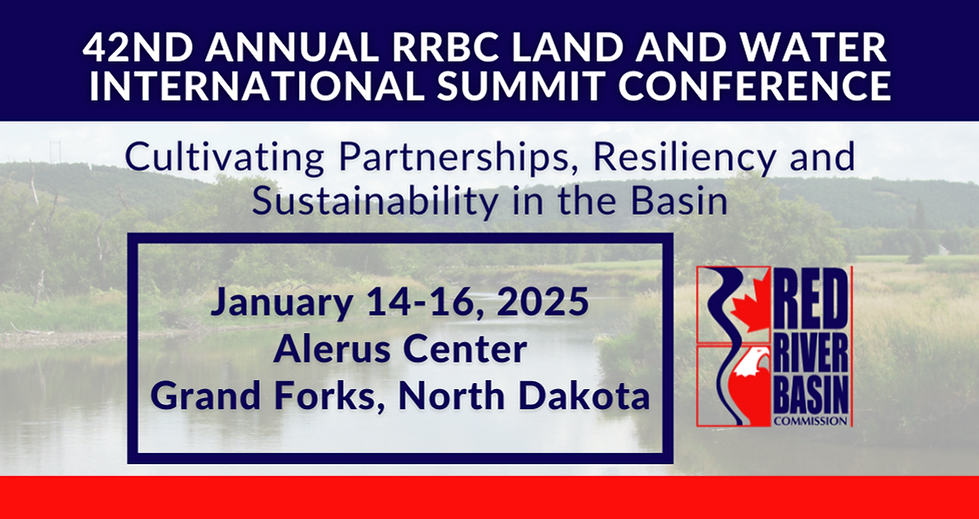
Red River Basin Watershed District Conference 2025
The 42nd annual Red River Basin Land and Water International Conference will be focusing on the innovations required to manage the unprecedented environmental changes facing our watersheds.
DATE: JANUARY 14-16, 2025
LOCATION: ALERUS CENTER, GRAND FORKS, NORTH DAKOTA
The conference provides an opportunity for watershed district staff and board members to engage with industry professionals, decision makers, businesses, and each other. It provides a place for celebrating successes, community building, staying connected to new and emerging practices, education, and advocacy for the protection of our water resources.
Visit the conference website by clicking the links below, and discover the full speaker list, and registration details.
FOR MORE INFORMATION:

Intro to HydroGeoSphere Training Session - January 2025
This online training session is free to attend!
Note: all event times are in eastern (EST/EDT)
Join Brayden McNeill, Aquanty’s Technical Sales Leader, for a 3-4 hour introductory training session to cover essential HydroGeoSphere topics such as:
The basic HGS workflow (i.e. using grok.exe, phgs.exe, hsplot.exe)
Review of model input/output files
The essential components of a *.grok file, how to structure your model inputs
Using AlgoMesh to generate your model grids/mesh
Visualizing results using TecPlot and/or ParaView
Introduce various resources to help you learn to use HGS
e.g. using the Reference Manual, HGS User Community, and other resources to your advantage.

Intro to HydroGeoSphere Training Session - December 2024
This online training session is free to attend!
Note: all event times are in eastern (EST/EDT)
Join Brayden McNeill, Aquanty’s Technical Sales Leader, for a 3-4 hour introductory training session to cover essential HydroGeoSphere topics such as:
The basic HGS workflow (i.e. using grok.exe, phgs.exe, hsplot.exe)
Review of model input/output files
The essential components of a *.grok file, how to structure your model inputs
Using AlgoMesh to generate your model grids/mesh
Visualizing results using TecPlot and/or ParaView
Introduce various resources to help you learn to use HGS
e.g. using the Reference Manual, HGS User Community, and other resources to your advantage.
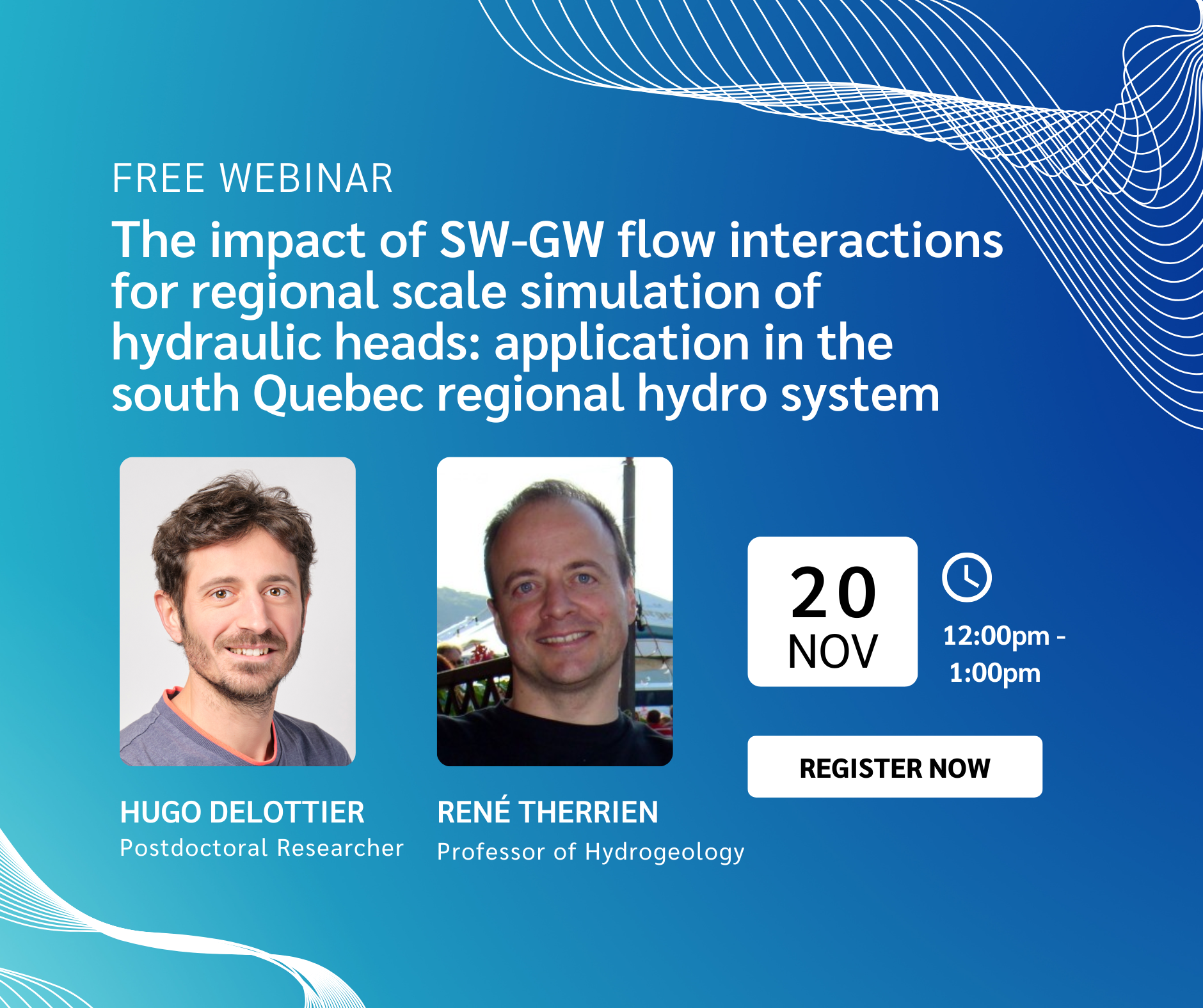
Webinar - The impact of SW-GW flow interactions for regional scale simulation of hydraulic heads: application in the south Quebec regional hydro system
Join us for an enlightening webinar as we dive into how the interaction between surface water (SW) and groundwater (GW) affects the accuracy of regional-scale simulations of water table elevations in Southern Quebec.

Intro to HydroGeoSphere Training Session - November 2024
This online training session is free to attend!
Note: all event times are in eastern (EST/EDT)
Join Brayden McNeill, Aquanty’s Technical Sales Leader, for a 3-4 hour introductory training session to cover essential HydroGeoSphere topics such as:
The basic HGS workflow (i.e. using grok.exe, phgs.exe, hsplot.exe)
Review of model input/output files
The essential components of a *.grok file, how to structure your model inputs
Using AlgoMesh to generate your model grids/mesh
Visualizing results using TecPlot and/or ParaView
Introduce various resources to help you learn to use HGS
e.g. using the Reference Manual, HGS User Community, and other resources to your advantage.
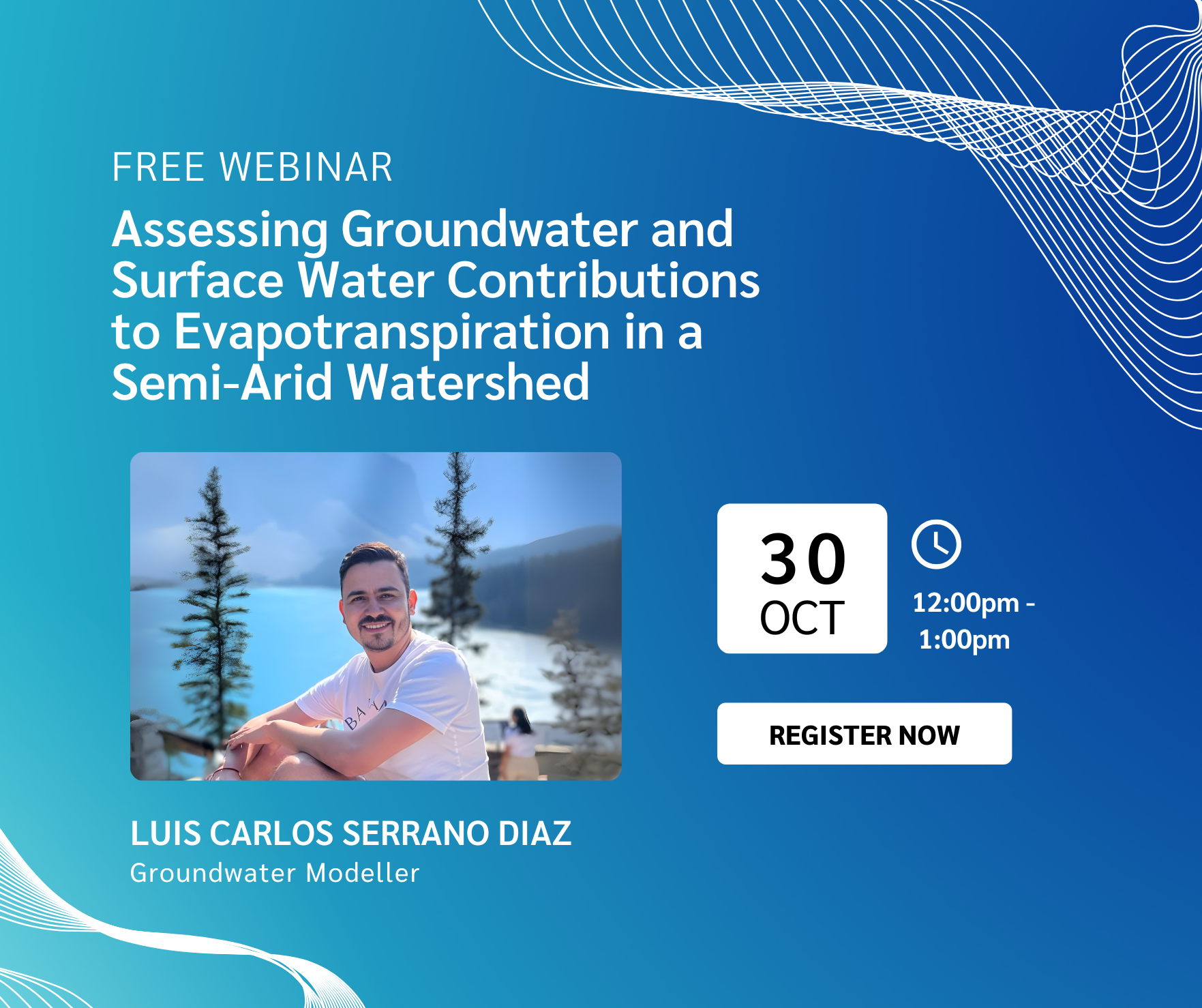
Webinar - Assessing Groundwater and Surface Water Contributions to Evapotranspiration in a Semi-Arid Watershed
Join us for an enlightening webinar as we explore how actual evapotranspiration (AET) dynamics in the North Saskatchewan River Basin are influenced by groundwater (GWET) and surface water (SWET) contributions. Discover the implications of climate change on water balance in semi-arid regions and gain insights from our HydroGeoSphere model findings.
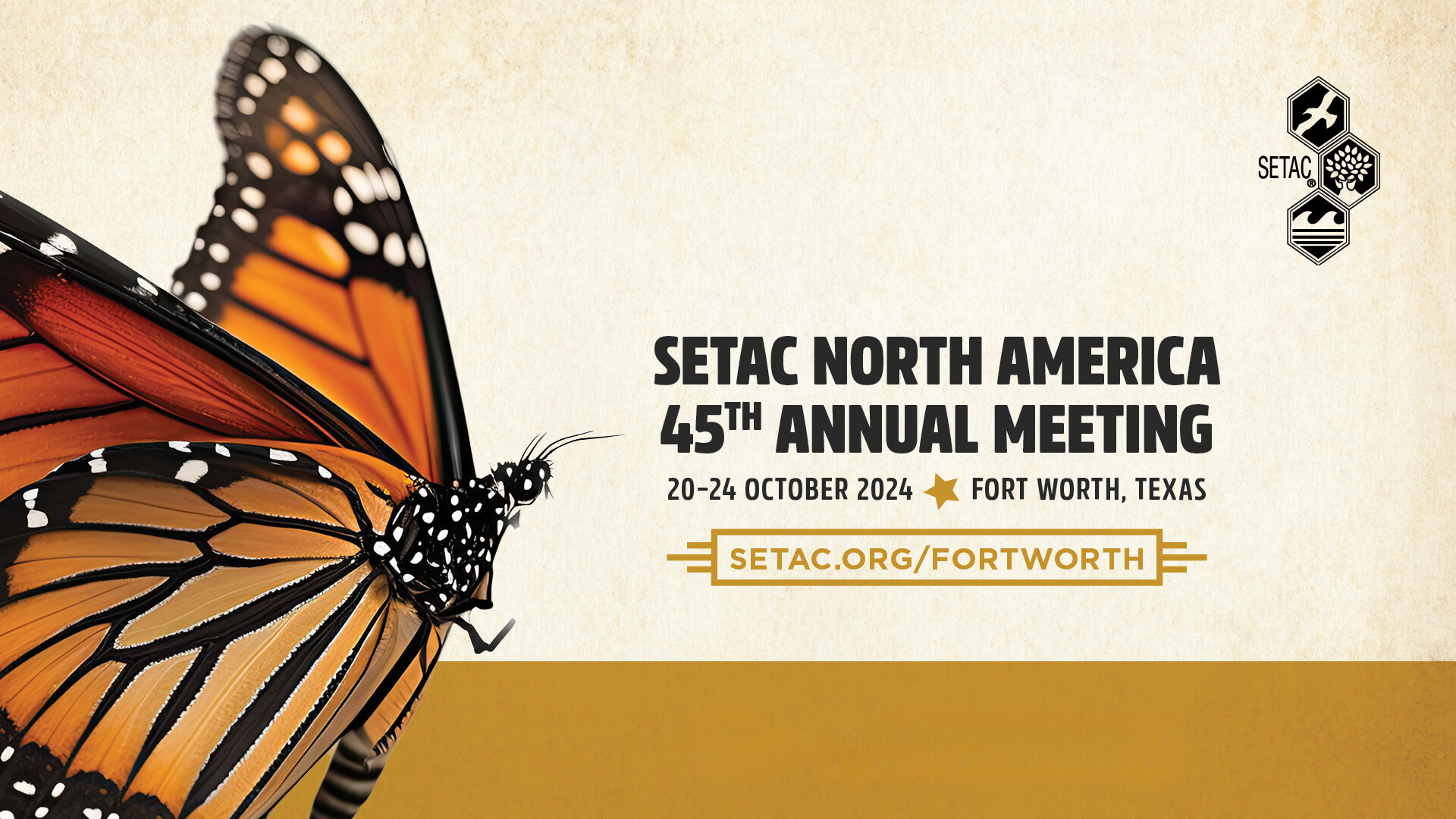
SETAC North America 45th Annual Meeting
SETAC is dedicated to advancing environmental science and science-informed decision-making through collaboration, communication, education and leadership. Mark your calendars for October 20-24, 2024, as Michael V. Callaghana and Brayden McNeil visit SETAC- visit the conference website by clicking the links below, and discover the full speaker list, and registration details.

Intro to HydroGeoSphere Training Session - October 2024
This online training session is free to attend!
Note: all event times are in eastern (EST/EDT)
Join Brayden McNeill, Aquanty’s Technical Sales Leader, for a 3-4 hour introductory training session to cover essential HydroGeoSphere topics such as:
The basic HGS workflow (i.e. using grok.exe, phgs.exe, hsplot.exe)
Review of model input/output files
The essential components of a *.grok file, how to structure your model inputs
Using AlgoMesh to generate your model grids/mesh
Visualizing results using TecPlot and/or ParaView
Introduce various resources to help you learn to use HGS
e.g. using the Reference Manual, HGS User Community, and other resources to your advantage.







